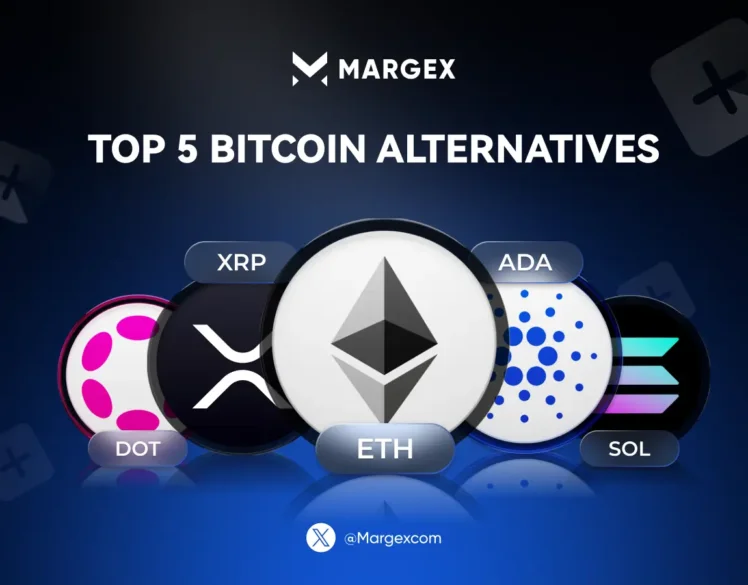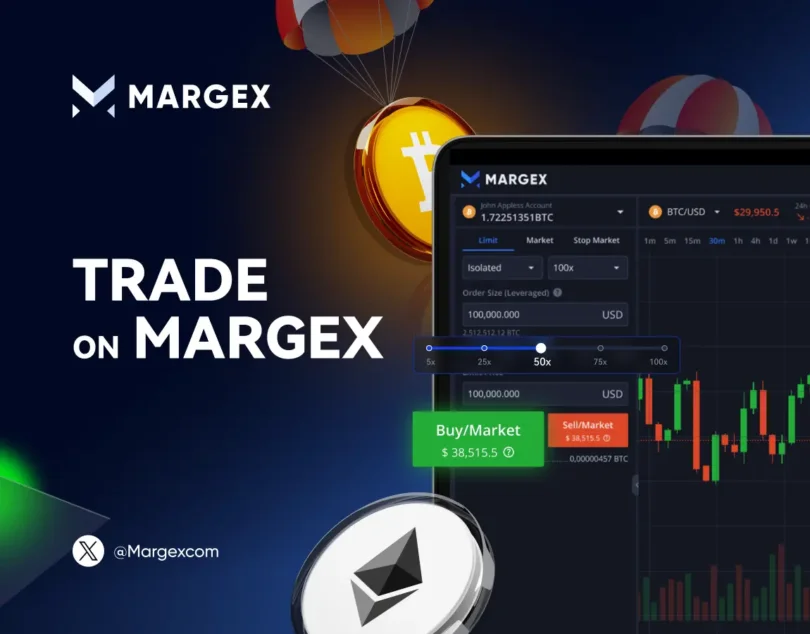Bitcoin Alternatives: 5 Promising Cryptocurrencies to Watch in 2025

Diversifying a portfolio and accessing new blockchain innovations by understanding alternatives to Bitcoin. At the early stages of the market when the space is booming at incredible speeds, comparing each network’s protocol, consensus mechanism and use cases will be essential to know which project can entrench itself or leapfrog ahead of the pioneering Bitcoin network in their utility.
By 2025, five leading networks have scaled, priced, and sustainability addressed the original protocol. This shift from proof of work to proof of stake cut real energy use by over 99%, and did so powering a rich DeFi and NFT ecosystem. Polkadot is handing shared security and bridging across chains with its parachain framework. Over 50,000 transactions per second and at the very cheapest cost, proof of history facilitates real‑time applications more than Solana’s proof of stake.
In 2009, Bitcoins have defined the market for decentralized digital money, with a market capitalization in the hundreds of billions and the creation of hundreds of follow on projects. But despite this, the network’s proof of work design constricts the network to an average of 3–7 transactions per second which causes bottlenecks during peak demand. The fees spike up to tens of dollars, and annual energy consumption is more than 150 TWh the equivalent of a European nation’s power usage. This has resulted in the fact that developers and investors are begining to learn about alternatives to Bitcoin to have faster confirmations, lower fees, and greener consensus methods.
These networks have developed outstanding features to solve common issues of the chain’s initial version. You will have a good overview of Ethereum (ETH), Ripple (XRP), Cardano (ADA), Polkadot (DOT), and Solana (SOL), and will be able to determine which one is the best Bitcoin alternatives for you.
Ethereum (ETH)
Ethereum became the main platform for decentralized applications and smart contracts ever since its launch. Compared to the original design of Bitcoin, which is all about peer-to-peer value transfer, Ethereum allows programs to be designed on its blockchain by means of a flexible scripting environment. Because Ethereum supports DeFi and NFTs, it is still a top choice for users looking for a Bitcoin alternative.
When Ethereum shifted to proof-of-stake using its “Merge” upgrade, it reduced its energy consumption to a great extent when compared to Bitcoin proof-of-work model. This change would also be used as a basis for future scaling solutions, such as sharding, that help increase transaction throughput and decrease costs. Gas fees can still shoot up during peak demand but a thriving ecosystem of layer‑2 networks and rollups is starting to take on Bitcoin since speed and affordability are being increasingly monetized.
While Ethereum may not be as robust as the Bitcoin network in terms of supply and belonging to the layer 1 network, it certainly has a large developer community, a high amount of adoption across multiple projects, and a decent amount of robust tooling which makes it a good choice as a Bitcoin alternative for projects that require programmable money or decentralised finance. With improvements like EIPs 4844 (“proto-danksharding”), the network is well set up to remain in the lead when it comes to where Bitcoin alternatives stand in the smart contract space.
Ripple (XRP)
Ripple has decided to present itself as a real‑time gross settlement platform that can match Bitcoin in its speed and cost. While Ripple is its own Bitcoin alternative, its focus is not in the store of value but in the cross border payments. Transactions on XRP Ledger happen in seconds, while on Bitcoin could take 10 or more minutes and more. As a deliverable, XRP is pretty good Bitcoin alternative for financial institutes who are looking for throughput stability and low fees.
The regulatory clarity on XRP is lacking especially following the legal arguments that were contested in the United States, but being a fast settlement and liquidity management tool for institutions that want a modern cross border flow; is XRP important. Because of that, the XRPL is built for cross border payments, whereby transactions happen for as little as 0.00001 XRP, or small fractions of a cent, which are settled in 4-5 seconds. It solves the issue of its lag and fee costs being 10+ minutes and even dollars under congestion, to Bitcoin.
Consensus Without Mining
Unlike Bitcoin endonious proof of work, XRPL is using its unique node list consensus protocol and finalizes the ledger in milliseconds consuming virtually no power. In the resulting design, real time gross settlement can be made real while sacrificing nothing in security or in decentralization in financial corridors.
Institutional Adoption
RippleNet’s on‑demand liquidity product bridges XRP for banks and fintechs to pull liquidity in real time and in real time to reduce pre‑funding requirements. Regulatory headwinds exist in some places, Ripple is partnered with major payment providers, which demonstrates XRPL can be used by enterprises as a Bitcoin alternative.
Cardano (ADA)
One that stands out as an alternative to Bitcoin, with research that is peer‑reviewed and development that is gradual, is cardano. Cardano is a Bitcoin alternative that relies on sustainability and formal verification as reasons why it specifically attracts developers and environmentally conscious investors. Whereas Bitcoin starts out with proof of stake, the cardi’an also consumes much less power. That is a distinctive Bitcoin alternative for projects with which you have long‑term governance goals.
Peer‑Reviewed Foundation
Cardano uses academic research and formal method, with new code version peer reviewed by colleagues before being brought into the blockchain. Rigorous security proofs characterized its Ouroboros proof‑of‑stake protocol, which more importantly, set a new standard of blockchain reliability.
Green Consensus
One of the things Cardano set out from the start, and that Bitcoin doesn’t have, is PoS, with the high energy costs of Bitcoin mining. Still, studies show that Cardano’s annual footprint is just a few GWh, 60,000x more efficient than a Bitcoin PoW network. This sustainability driven projects find that environmental advantage very attractive.
Layered Architecture and Governance
The separation of settlement and computation implemented on Cardano allows for protocol upgrades without affecting ADA transfers. More security and performance comes in the form of features such as Mithril for light client proofs and improved Plutus smart contracts. For long‑term use cases, Cardano’s on‑chain governance model means ADA holders work directly with the network to evolve the network; a result of this being thus a durable Bitcoin alternative.
Polkadot (DOT)
Polkadot is leading the army of standalone Bitcoin competitors due to its parachain architecture and high degree of interoperability. Like a unique Bitcoin alternative, Polkadot is a system that enables different blockchains to operate with each other independently and under one shared security model. Polkadot balances decentralization and security with capacity. Arguably, Bitcoin top priority is decentralization and security over all else, while Polkadot trades decentralization and security for the ability to customize.
Relay Chain provides security that allows parallel chains to run which will have more speed, privacy or governance based networks. With Polkadot, investors looking for a Bitcoin alternative that allows cross chain communication will find it attractive. Further, being a bridge to networks like Ethereum and Binance Smart Chain allows it to make easier, faster asset and data transference than depending on Bitcoin slower, more costly transactions.
Parachain slot auctions are conducted by bidding in DOT tokens and successful projects get stable funding and integration into Polkadot’s ecosystem. If you are a developer looking for a modular framework that can grow and not compromise security at the same time, Polkadot is quite a compelling Bitcoin alternative in the realm of blockchain space driven by governance.

Relay Chain and Parachains
Now, Polkadot introduces Relay Chain, a secure multiparity blockchains which secures many parallel blockchains (“parachains”) each optimized for its respective applicaiton. It allows for a shared security budget, but without fragmented security wallets; this speeds up the app development path, providing immediate guarantees out of the box.
Cross‑Chain Bridges
Polkadot connects to the external networks like Ethereum and other ecosystems, bridges it with the external data & asset transfers seamlessly without going through the slower protocols. Polkadot sits well as the foundation for a Web3 that is truly interconnected, which is this interoperability positioning it as a true Bitcoin alternative.
Governance and Customization
The Polkadot NPoS consensus means that each parachain can implement its own custom fee structures, governance rules, tokenomics and so on. It can launch projects with its own economics and upgrade independently to provide a flexible blockchain platform for the innovation of blockchain solutions.
Solana (SOL)
As proof of history is its consensus, Solana has risen among the most high‑performance Bitcoin alternatives. Being a millisecond block times and low transaction cost blockchain, it is one of the preferred options of people in their search of a scalable Bitcoin alternative. Whereas Bitcoin brought blockchain to the world, Solana boosted performance and scale.
Solana allows high‑frequency use cases and microtransaction with validator fees way lower than Bitcoin. Often preferred by developers looking for a Bitcoin alternative for live applications is Solana, which is faster than other networks. Based outages or otherwise, Solana’s throughput shouldn’t fail to exceed tens of thousands of transactions per second and, of course, are significantly faster than Bitcoin.
Proof‑of‑History Innovation
PoH cryptographic clock provides even more interesting properties, allowing Solana to have over 50,000 TPS with sub second finality. Common overhead in other chains is removed by this architecture.
Ultra‑Low Fees and Fast Blocks
Its block times of 400 ms and an average of $0.00025 per transaction makes Solana suitable for fast trading, micropayments and even on chain gaming that wouldn’t be possible on the rather slow and expensive network of Bitcoin.
Resilience and Upgrades
Despite the Solana network having had its occasional network congestions and outages, the Fire dancer client and protocol optimizations on Solana are a way to improve reliability. With such efforts coupled with its performance metrics, Solana is a scalable Bitcoin equivalent for demanding applications.
Choosing the Right Bitcoin Alternative for You
Decision processes for a Bitcoin alternative must include transaction speed, security, decentralization, energy use, and developer support. Ethereum competitors and still the frontrunner is smart contracts and DeFi are your focus. However, Ripple truly excels in the institutional payment flows, Cardano works with research backed proof of stake, Polkadot provides one solution cross chain interoperability, and Solana boasts unmatched throughput.
Each of these networks tackles each of these Bitcoin’s limitation, ranging from high fees, slow confirmations, or even environmental concerns. When pondering what the Bitcoin alternative is and attempts to weigh these factors and purpose your use case (application development, value transfer, or trading), it provides you with the choice of choosing the Bitcoin alternative appropriate for your goals. The best Bitcoin alternative for your portfolio or project is one that you can stand to lose decentralization, performance, and cost of for.
Frequently Asked Questions
Which coin can replace Bitcoin?
While no network has completely replaced Bitcoin status as a store of value, Ethereum’s smart contract ecosystem and proof‑of‑stake model position it as a strong contender. Some investors view Ethereum as the most likely candidate to rival Bitcoin market dominance in the long run, given its widespread adoption and developer support.
What is a sustainable alternative to Bitcoin?
Cardano and Ethereum (post‑Merge) both use proof‑of‑stake consensus, which consumes far less energy than Bitcoin proof‑of‑work. Cardano’s focus on academic research and gradual rollout makes it especially appealing for those prioritizing sustainability and formal verification.
Which crypto has a big future?
Projects that offer scalability, practical use cases, and strong developer communities – such as Ethereum, Polkadot, and Solana – are often cited as having significant long‑term potential beyond the Bitcoin role as a digital gold.
What is next after Bitcoin?
Many in the industry expect multi‑chain ecosystems where Bitcoin continues as a store of value, while application‑focused networks like Ethereum, Polkadot, and Solana handle complex decentralized services. Innovations in interoperability will link these chains, creating a seamless user experience across diverse blockchains.


